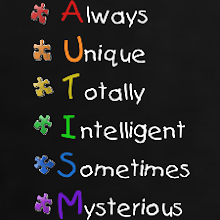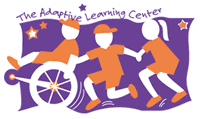I suddenly found myself telling this women all about our favorite GFCF foods, because she mentioned that she was having trouble finding gluten-free foods for her 9-year-old, who was recently diagnosed with celiac disease.
When we started our GFCF journey more than five years ago, the new federal labeling standards were non-existant, you couldn't tell if a product contained milk, casein or whey and I constantly had to tell my husband not to buy anything for our son, unless I gave him a specific product name.
Of course that meant not grocery shopping for the GFCF kid, unless you were lucky enough to live near a health food store and even then, you couldn't always trust the store's supposedly Gluten Free products. A sales person once tried to convince me that spelt was wheat-free. When I took exception to her comment, she informed me that most wheat-allergic people are not allergic to spelt. I think I'll stick with Wikipedia's definition .
Back then, I felt like a freak in a milk & wheat world and, when I told people that my son was allergic to milk and wheat, they looked at me in horror and asked "What does he eat?"
Well, until age 16 months, he ate no solid food.
Then we discovered Kinnikinnick breads, Gluten Free Pantry mixes and Roberts Tings. A couple of years later, after bi-monthly trips to the only really good health food store within 30 miles, I discovered that we could purchase many of our favorite GFCF foods cheaper on the internet.
- Amazon sells a wide variety of GFCF and Gluten Free foods and, if you sign up for Amazon Prime, you get free 2-day shipping on eligible products. Amazon also tracks your favorites and notifies you when they are on sale or subject to a special offer.
- Kinnikinnick allows you to order up to $200 in foods and pay only $10 in shipping, plus they give you GFCF points toward future orders. (Kinnikinnick is now available in select grocery and health food stores. The prices are considerably higher than buying directly from the company; however, I recommend trying their products locally before you buy in bulk.)
- Ener-G and other GFCF sites offer sales and promotions on various GFCF products.
Buying in bulk doesn't have to be difficult. If you don't have a pantry (or your pantry is already overflowing like mine), store the non-perishible items in your garage, get an extra freezer, if needed (our's cost < $150), and invest in a food saver vacuum sealer, which keeps breads and other foods fresh in your fridge or freezer for months. This may seem overwhelming, but, if you're like me, you probably don't have the time (or in my case the talent) to cook GFCF foods from scratch. (Case in point, it took me 3 years to create an edible birthday cake.) And, many of our favorite foods come pre-packaged in small sizes for car trips, school lunches, eating out etc. . .
Word to the wise, let your child choose his/her favorites. Not everything will be a hit. I once got a great deal on gluten free apple and blueberry fruit bars from Amazon. My son (the world's pickiest eater) hated them and they stayed in the pantry for months, until my athletic tween, who will and does eat everything when she's hungry, discovered them. They are long since gone.
- Check with your local store about return guarantees, many stores will take an opened item back if you or your child aren't satisfied.
- Don't invest in a bread machine, mini-fryer or other small appliance for GFCF cooking, unless you will use them frequently. If you want to try a new recipe, such as a GFCF coating mix, borrow a fryer from a friend or follow the pan fried instructions. (Our deep fryer has been on the pantry shelf, since we discovered after only one week that it was more trouble than it was worth and the GFCF bread mixes we tried in our bread machine weren't as good as the store bought breads.)
- Be on the look out for sales and manager's specials. You will save money in the long run.
- Sign up for e-mail alerts and coupons on your favorite GFCF food sites. Many of them track your purchases and highlight your favorites when they are on sale.
- And, last, but not least, create a GFCF safe kitchen. Set aside a counter area, cabinet or pantry shelf, use matching or easily identifiable containers for loose foods, such as chips and snacks, and label all of your child's GFCF foods. (My son has a GFCF corner and pantry shelf dedicated to his foods, all of which are labled with his name and our personal logo. That way relatives, visitors and sitters know what they can and cannot feed him.)
As I said, we've come a long way. The GFCF diet has finally come out of the dark ages and is fast becoming a main stream topic. New Federal labeling rules require foods to state in plain terms whether they contain certain allergens, such as wheat, milk, soy or peanuts, many manufacturers now state that their products are produced in plants where items containing such allergens are prepared and restaurants/fast food chains are now listing food allergen information on their website.
Stay tuned for my next post on the GFCF diet in a fast food world.
Nianya




















